This is the story of Balerno School and how its annual Burns competitions have been sponsored by ‘Let it Blaw’ since the 1892. Firstly, we’ll start with the history of the School many years prior to the foundation of the Burns Club:
There was a school in the village of Balerno as early as 1814, perhaps even earlier, and small schools also existed at Goodtrees and Malleny Mills. For a while, there was even a second school, St Mungo’s School, attached to St Mungo’s Episcopal Church; created when their new church was built in Ladycroft in 1869. The building consisted of a small church, the school, and a cottage for the headteacher.
In a report written in 1931 by our own Fred Belford by which time he had been Headmaster of Balerno School for nine years, he indicated that the first School in the village was built c. 1830. The location of this school was in or about the car park behind the Co-op supermarket.

An insight into how the original school operated can be gleaned from answers to a statistical questionnaire dated 1837. Click this link to read the details ……… School Questionnaire
An entry in the Balerno School log book stated “1868, December 25 – Lessons as usual, progress satisfactory.” Christmas Carols and Parties were a long way off with the only festive holidays being December 31st, and January 1st although a little festive relaxation crept in during 1870 when the school closed early at 2.00pm on Christmas Day.
The length of the day varied around 9.30am to 3.30pm, Monday to Friday, depending on the time of year. Street lighting would still be a thing of the future as more than one entry in the log referred to impending darkness; “Dismissed a little sooner for want of light” and “Dismissed at 2.45pm (dull)“.
A fairly typical school year might be highlighted by session 1871/72 which commenced on 2nd October and finished on 22nd August with two days off at New Year, one day off on Hansel Monday, two days off for Edinburgh fast days in April and October, and a day off for the Parish fast day in July and for Queen Victoria’s birthday in May; a total of 231 days were spent at school in the session.
The roll fluctuated around 100 at that time but absences of 30 or 40 were commonplace and highest when local farms had need of labour. An entry in the school log in 1872 stated “labourers being scarce so that some of the higher scholars left school temporarily.“
In the early years, the emphasis at Balerno School was on Arithmetic, Grammar, Writing, the Bible, Sewing and Singing. An additional subject, Geography, was introduced by 1867. An entry in July that year states “Lessons as usual. Highest class commenced Geography and History of Mexico for examination (Maximillan);” a reference to the Emperor of Mexico (1832-67). A very topical subject, but surely unusual in a little country school at a time when communications were not what they are today.
At that time, the school was conducted in a two storey detached house of seven apartments, a dwelling above and school rooms below. A very critical Inspector’s Report of 1871 said “The school is still overcrowded. I am to remind you that if the revised code were in operation in Scotland, no grant whatsoever could be made to the school under the present circumstances.”
The above report by J. Langwell, Secretary of Managers, together with the new Education Act of 1872, started the movement towards a new school building but, like today, progress was slow. Almost six years later, the following was said in an Inspector’s Report; ” this school has hitherto been conducted in inadequate premises. The new building is nearly ready and the teacher will then have an opportunity of grouping the classes.”
So, on 1st April 1878, the new Balerno School opened at 11:00am. The initial building of 1878 cost £2000 to build and consisted of a School Room and a Class Room (There were later additions).
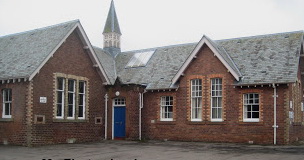
Balerno School (opened 1878) later to become the annexe of Dean Park Primary School
An inspection shortly after opening stated “The basic work of the Standards 1 to 6 consisted of Arithmetic, Grammar, History, Geography and Industrial Work. Frequent references were made to Sewing.” In 1880, a Miss Marshall of Curriehill visited the school and intimated that she would give prizes in needlework to the girls at the close of session. Reading, Interpretation, Mechanical Repetition, Penmanship and Smartness of Demeanour, all came in for comment in the Inspector’s Report.
The Headmaster when the new school opened in 1878 was David Bisset who died the following year. He was succeeded by David Brown (later to become a member of ‘Let it Blaw’ for over 40 years).
In 1887, reasons given for absence included “gathering sticks“, carrying water” and “turnip shawing.” In the Inspector’s Report of 1888, the following was stated “The tone of the school is good, and the pupils answer frankly and readily, but they might enter and leave school in a more orderly fashion. Sewing is well taught and in Singing unusually good tone and expression have been secured. The staff requires strengthening. In the Infant Department at Inspection over 100 children at various stages of advancement were found in the charge of one teacher. It is a marvel that under the circumstances the work should be so good as it is. The report lists the School Staff as :
Elizabeth Campbell
Georgina Meikle
Malcolm W Scott (later to become a member of ‘Let it Blaw’) who was described as the School Clerk.
In 1892, reference was still being made in Inspections to irregular attendance with, over subsequent years, Whooping Cough, Chicken Pox, Measles, Scarlet Fever, Impetigo and even Diptheria all causing absences and occasional school closures. Added to medical issues, absences were caused by children having to work e.g. at Balleny Farm when the thrashing machine arrived and, a week later when it was moved to Pilmuir Farm. The other single factor which determined the attendance was of course the weather. Stormy conditions meant that children who either walked from a distance or were poorly clad didn’t turn up. The winter of January 1881 was mentioned in the school log as being particularly severe with snow two feet deep which resulted in the school being closed for two days; this was the winter which saw the founding of the ‘Let it Blaw,’ the Balerno Burns Club, which held it’s first Supper held on 25th January 1881 in Henderson’s Inn.
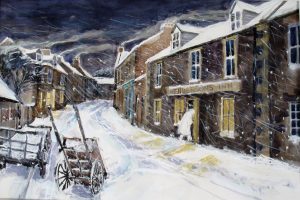
The minute of a ‘Let it Blaw’ committee meeting on 2nd February 1892 stated: “With regard to the presentation prizes for children at Balerno School it was remitted to David B. Fairbairn to intimate that the Club shall give two prizes of the value of 10/- ( £ 0.50 ) to be competed for this year”…and so began one of the Balerno Burns Club’s great traditions, the annual school Burns Competitions at what was later renamed Dean Park Primary School, Balerno.
It’s not recorded whether a competition took place or not in 1892. However, almost a year later, at the committee meeting of the Club held on 23rd December 1892, the minute records the following: “Regarding prizes to be given to the Balerno School Children, it was agreed that a sum of cash more than a £1 be voted towards buying four copies of Burns works, two of which to be awarded to boys and two to the girls for the best rendered Song or Recitation from his works. Messrs David B. Fairbairn, Thomas Horsburgh and George Y. Robertson were appointed adjudicators.” Almost 130 years later, the Club still provides adjudicators at the annual contests, and any Club member lucky enough to have been a judge, will appreciate the time and effort the children and the school staff have put in to this over the years.
In July 1893, the first record of a School Competition was made when the Club Secretary wrote: “As had been arranged, the Competition for four copies of the poet’s works by the children attending Balerno School was held in the schoolroom this afternoon when the prizes were awarded to the following successful competitors :
Boys
1st Recitation, Jas. Falconer
1st Singing Jessie Brown
George Robertson, David B. Fairbairn & Thomas Horsburgh awarded the prizes.”
One of the Club’s first prize-winners named above, James Garnet Fairbairn, son of Club President on many occasions David B. Fairbairn, and grandson of one of our Founder members James Fairbairn Snr., attended ‘Let it Blaw’ for the first time in 1907 and carried out the duties of Croupier at the 1910 Supper.
He died on 18th March 1915 fighting with 1st Battalion Canadian Infantry (Western Ontario Regiment) and is buried in Y Farm Military Cemetery, near the village of Bois-Grenier in Northern France.
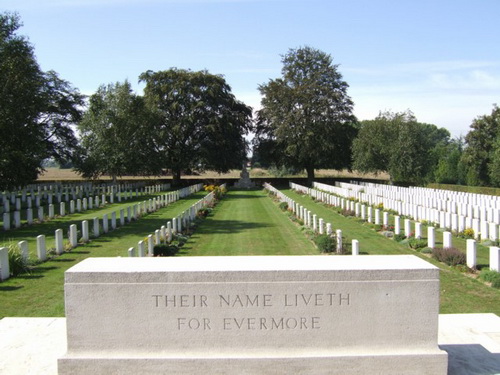
Y Farm Military Cemetery, Bois-Grenier, France
James is commemorated on a panel within Balerno Parish Church and also on a Memorial at Currie Kirk. A sad end for the wee nine year old boy who won his prize at Balerno School. It’s fitting that he’s also remembered here.
Not long after the first contest, things started changing at Balerno School; In 1897 the school had Easter Holidays for the first time but it took until 1901 before Christmas Holidays were granted. It might also seem incredible to many of us today that on 25th May 1900, the school was given an extra holiday to celebrate the “Relief of Mafeking” in the second Boer War.
In June 1899, the Episcopal Church school at Ladycroft (mentioned above) closed and some thirty pupils were added to the Balerno School roll which created problems. The school roll at this time exceeded 200 and classes were temporarily conducted in the “Village Reading Room,” one of the brick extensions to the original building, until such times as the new classrooms being built would be ready in 1901.
With the school having David Brown as it’s headmaster, there’s no reason to believe that during this period, the Burns Competitions weren’t held albeit references to them in the Club records are scarce through to 1922/23. That was when Fred Belford took over from the retiring David Brown, who had been in post as Headmaster for 44 years. In the record of a Committee Meeting on 26th January 1923, just prior to the Supper, a list of those attending the Supper included Fred, He was instantly active within ‘Let it Blaw’ speaking at that first Supper and, by 23rd March 1923, he had been appointed to the Club Committee.
Fred became a keen, passionate and knowledgeable Burnsian intent on passing his knowledge and enthusiasm to future generations through his direct involvement in education. Under his stewardship, the school competitions thrived. In the Club’s report of the 1929 competitions, the following was recorded: “Councillor Horsburgh J.P., who presided, expressed his gratitude at the large audience and interest shown year by year by the parents and the children. The entries showed a marked increase this year, 110 scholars taking part. The pieces selected for elocution were:- for Juniors under 10, ‘A Rosebud by my Early Walk’,for Intermediate pupils from 10 to 12, ‘To a Mouse’ and for seniors from 12 to 14, “The Cotter’s Saturday Night.’ The Club was again fortunate in securing the services of Mr John McVie, Edinburgh (Secretary of the Burns Clubs Association of Edinburgh) as adjudicator.” The record listed the many prize winners and went on to say: “Diplomas of the Burns Federation were issued to Annie Hogg, Nancy Ramsay (sister of the Club’s past Vice President Bill [Loppy] Ramsay), Annie Harper, Agnes Russell and Willie Garlick (believed to be grandson of our Founder Member, William Garlick ).
The bronze medal of the Federation, awarded to the competitor gaining the highest number of marks in the competition, was won by Annie Hogg with 83%. A most enjoyable and instructive evening was brought to a close with votes of thanks to Mr McVie, Mr Belford and the Chairman.” This was the first mention of the Burns Federation in connection with the Balerno School competitions. The record of the 1930 competitions ends “The Club are greatly indebted to Mr Belford, Headmaster, for his indefatigable efforts towards bringing the children to such a state of efficiency.”
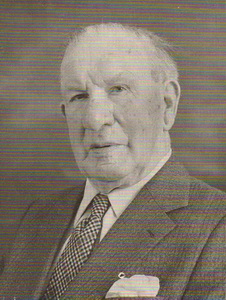
Fred Belford
On 20th November 1931, the following was recorded: “The Chairman (Thomas Horsburgh) presented Mr Belford with a walnut bureau as a tribute from the Club for the eminent and enthusiastic services he had rendered to the Club during the nine years he had been a member. He also wished him all success in his new appointment at Dalkeith.
Mr Belford feelingly and briefly replied, thanking the Club for their extreme kindness and said he would still retain his membership.”
Fred Belford held the position of Vice President of ‘Let it Blaw’ for several years during the lengthy presidency of Tom Horsburgh. He proposed the “Immortal Memory of Robert Burns” three times at Club Suppers in 1924, 1956 and 1968 and is included on our list of former Croupiers. In 1959 he was elected President of the Burns Federation and in 1978, two years prior to his death, he was made the ‘Federation’s first ever Honorary Life President in recognition of his long and eventful service. Read our tribute to Fred by clicking on Fred Belford
It was intimated at that meeting in November 1931 that James Hope, the School’s new Headmaster, had kindly agreed to continue the childrens’ competitions which was greatly appreciated by Club Members. Mention was made of “senior” pupils from Balerno having been transferred to Currie School during 1930 and how they would be permitted to compete in that year’s competitions. Luckily, the headmaster of Currie School, William Esson, was also a lover of Burns work and also became an active member of ‘Let it Blaw.’ And so the school competitions carried on for many years under the stewardship of Fred Belford, and into the 1930s supported by Messrs Hope, Esson and their successors.
In 1934 the Burns Federation appointed Fred Belford as Honorary Secretary of the schools competitions in Scottish Literature. An honour for Fred and a huge honour for ‘Let it Blaw.’
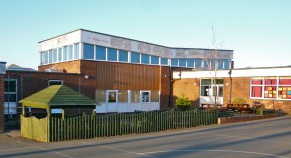
Dean Park Primary School, Balerno in the 1980s
In the late 1930s, ‘Let it Blaw’ lost two stalwarts Tom Horsburgh and John Fairbairn which inevitably had a huge impact on the operation of the Club. Records were kept but lacked much detail and competition records became almost non-existent. However, with Fred Belford remaining active into the 1970s, rising to the very top of the Burns Federation as President in 1959, it seems reasonable to assume the contests continued on an annual basis. Club records were lost in the 1960s and information on Club activities in that period remains vague. It is, however, recorded within the Burns Federation that Fred judged our competitions in Balerno at least up to 1973.
The record of the Annual General Meeting held on 19th December 1932 reported the following proposal for Membership: “Willie Shanks, Currievale, Currie.” Not a major development in any way, but the arrival of a man who in later life, did much to revive the Balerno Burns Club and continue the traditions of the school Burns competitions.
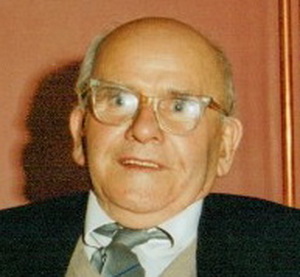
Willie Shanks BEM
A passionate supporter of the annual events, Willie followed the example set by John Fairbairn, the Club’s Secretary for over 50 years, by recording the competition details and prize winners setting the standard for the rest of us to follow. The assistance of the school headmaster throughout Willie’s time, Ian Falconer, was immense with Ian being granted Honorary Membership of ‘Let it Blaw’ for his services. Ian became an active member of the Club proposing the “Immortal Memory” at the 1978 Supper.
Gordon Grant, past Secretary and Honorary Vice-President of ‘Let it Blaw,” carried on where Willie left off ensuring the Club’s association with school competitions prevailed. He served on the Schools’ Committee of the Burns Federation and was our Club delegate at the meetings of the Edinburgh District Burns Club Association where he was actively involved organising the Edinburgh area schools’ contests.
Encouraging children to experience the life and work of Burns remains a high priority for the Balerno Burns Club and hopefully it will forever remain so. The standard of work attained by children from Balerno in recent years has seen a healthy number progress from our own local competitions to District level and then on to National Competitions where the name of Dean Park School has often been to the fore. This is thanks, in no small way, to the work of Fred Belford, Willie Shanks, and those early members who had the foresight to start the competitions in the late 19th century. We are forever in their debt.
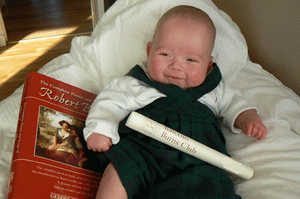
It’s never too young to start !
—
Tribute to Fred Belford
Written by Alex McMillan & Published in the 1976 Burns Chronicle
150,000 Children do Fred’s Competitions
—
Fred Belford, of jovial countenance and merry smile is, we suppose, the best known man in the Burns Federation. He was educated at George Heriots School in Edinburgh and Edinburgh University, held headmasterships in Peeblesshire, Banffshire and Midlothian and, as far back as 1928, was honoured for his services to education
He was appointed Honorary Secretary of the Schools Competition in Scottish Literature by the Burns Federation in 1934, and has seen this side of the Federation’s services to Scotland grow until now, Fred is distressed if less than 150,000 schoolchildren take part in these competitions each year. They extend the length and breadth of Scotland and, in recent years, have reached down in to the Scottish Communities in England.
No one can tell how many thousands through the years owe a debt of gratitude to Fred for their introduction to Scots when they were bairns through the Federation’s competitions.
Fred’s work for the Federation was recognised in 1959 – why so long awaiting? – when he was appointed President.
If you are joining the train south from Edinburgh at or around the 25th January, you may see Fred with his well-worn travelling-bag, trudging up the platform, looking for a kindred spirit with whom to while away the time on the journey, for he will be on one of his many excursions to propose the “Immortal Memory.” Why is this Man so popular ? Because he was a fund of stories accumulated throughout the years of his long life; because he has a complete knowledge of the Poet; because he has a most retentive memory; and because he has a most endearing personality. His audience chuckles with him, and ends up loving him.
Not only is he the doyen of Burns Club speakers, but he has contributed many articles on the National Bard to magazines, and stalked the country with his couthy talks on Scottish Humour. He is Scottish Humour; he is the Burns Federation’s Laughing Cavalier !
–
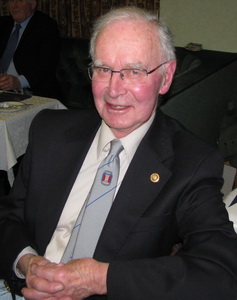
Ian Falconer
Our thanks to Ian Falconer, Honorary Member of ‘Let it Blaw,’ last Headmaster of Balerno School and first Headmaster of the new Dean Park School for his assistance in creating this record.
